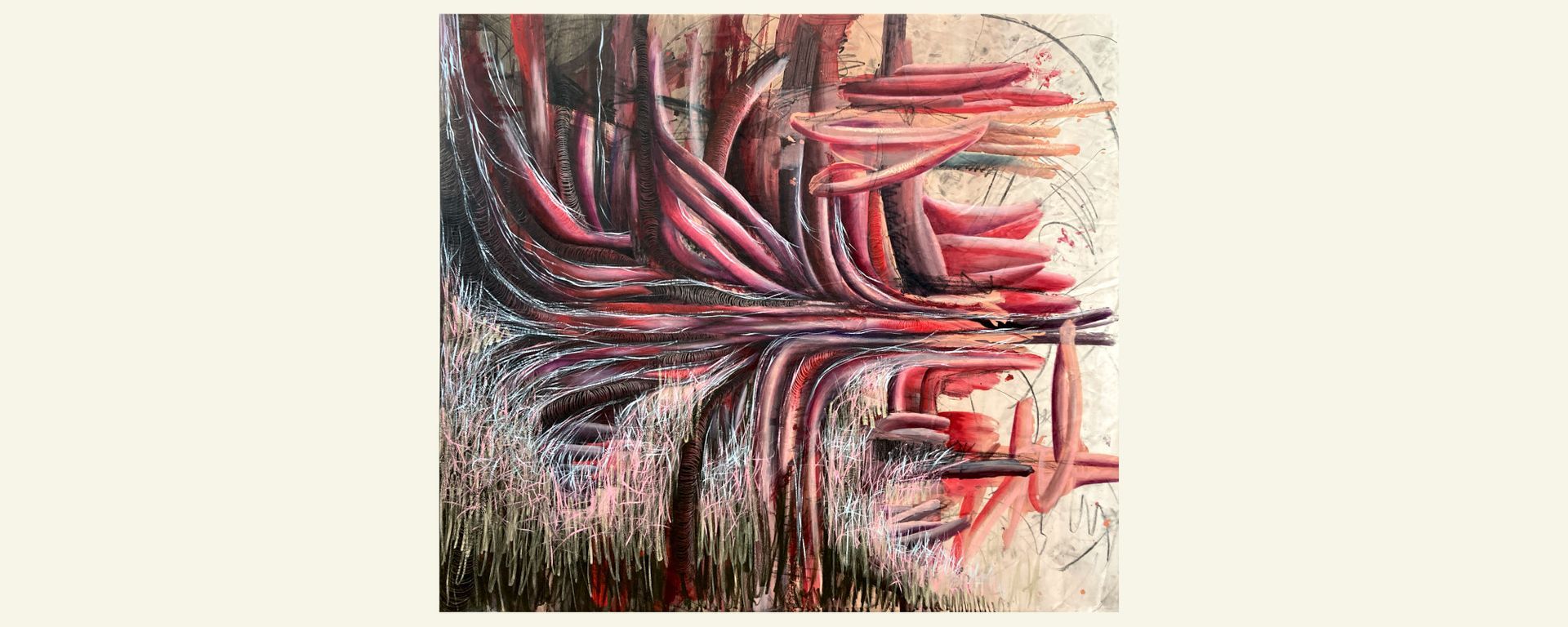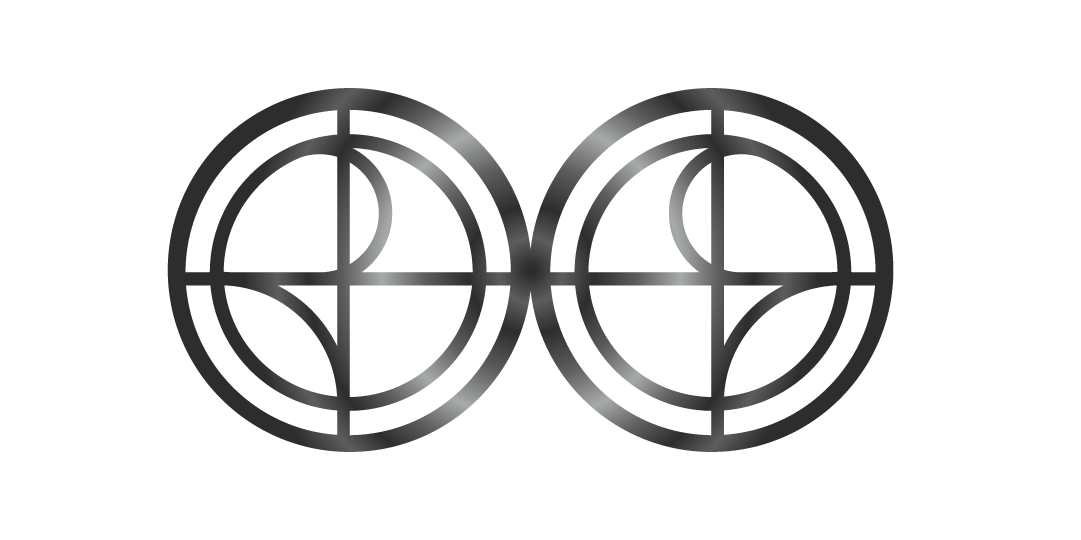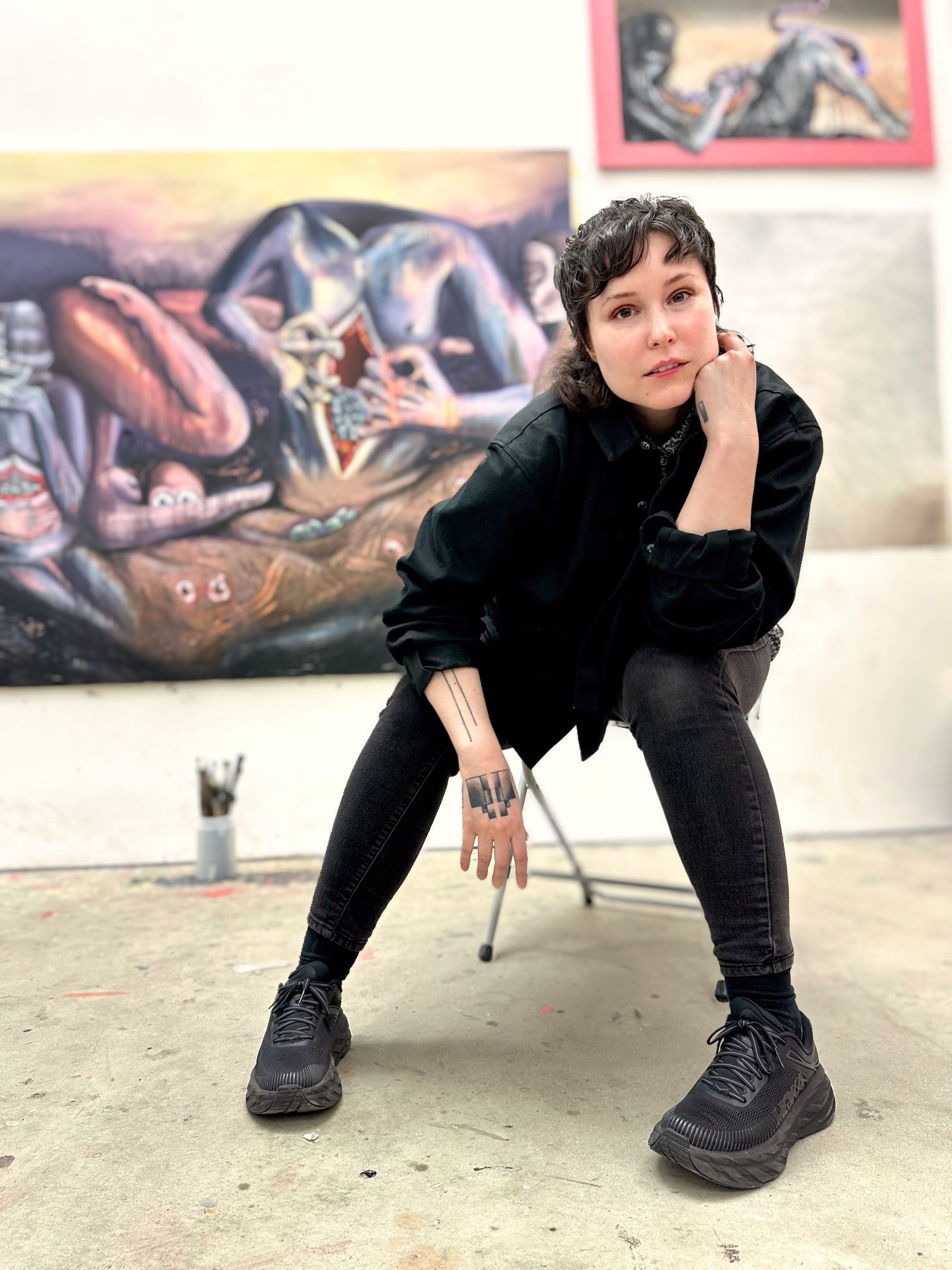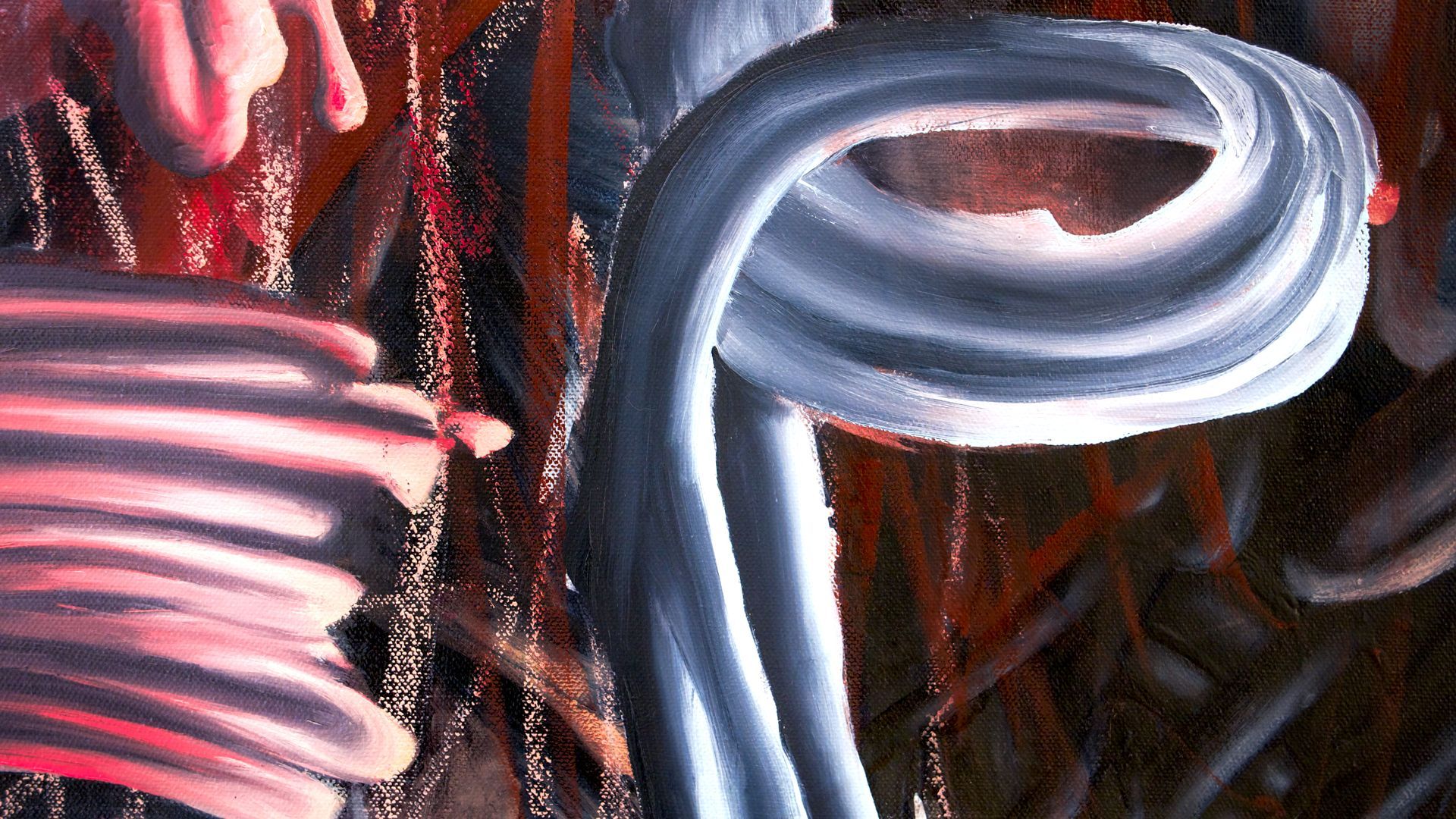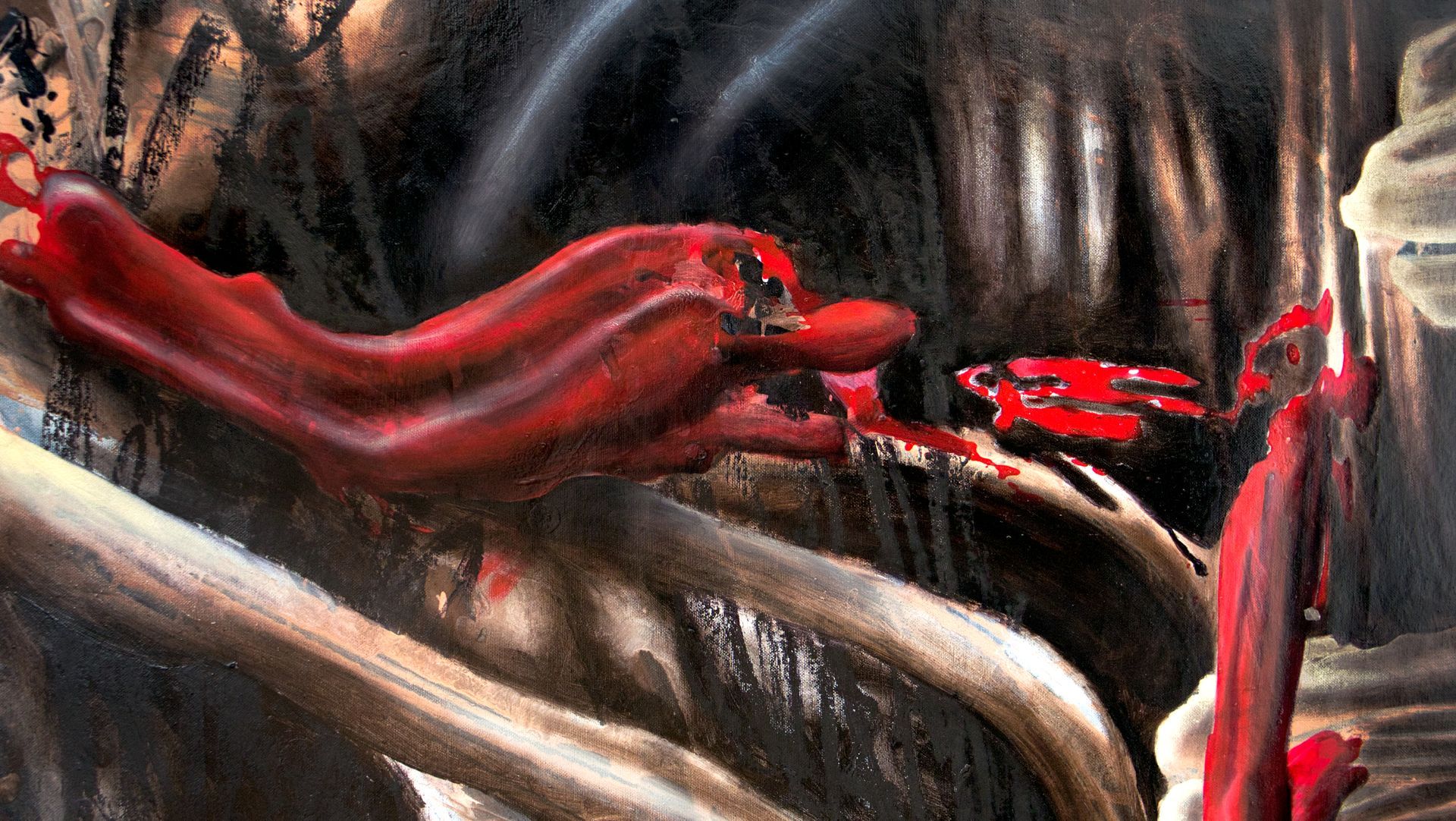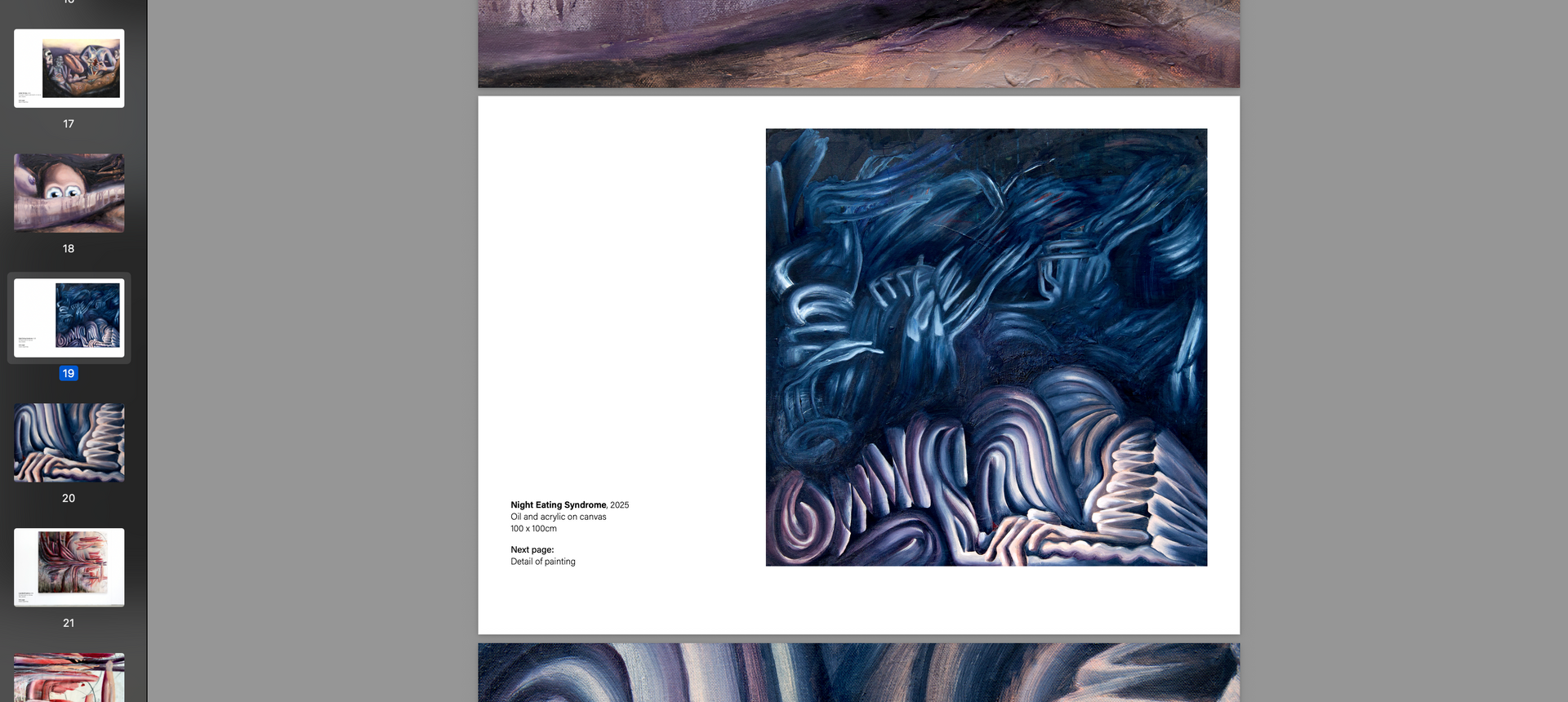Lala Drona is a Franco-American fine artist of Venezuelan heritage working between Paris and London. Her practice spans painting and video, probing the body not by appearance but by sensation: an interior landscape of memory, intervention, and transformation. She recently completed her Masters in Painting at the Royal College of Art.
Confronting the Paint: How I Rediscovered My Painting Process
Embracing Spontaneity, Mark-Making, and the Raw Power of Paint in Contemporary Practice
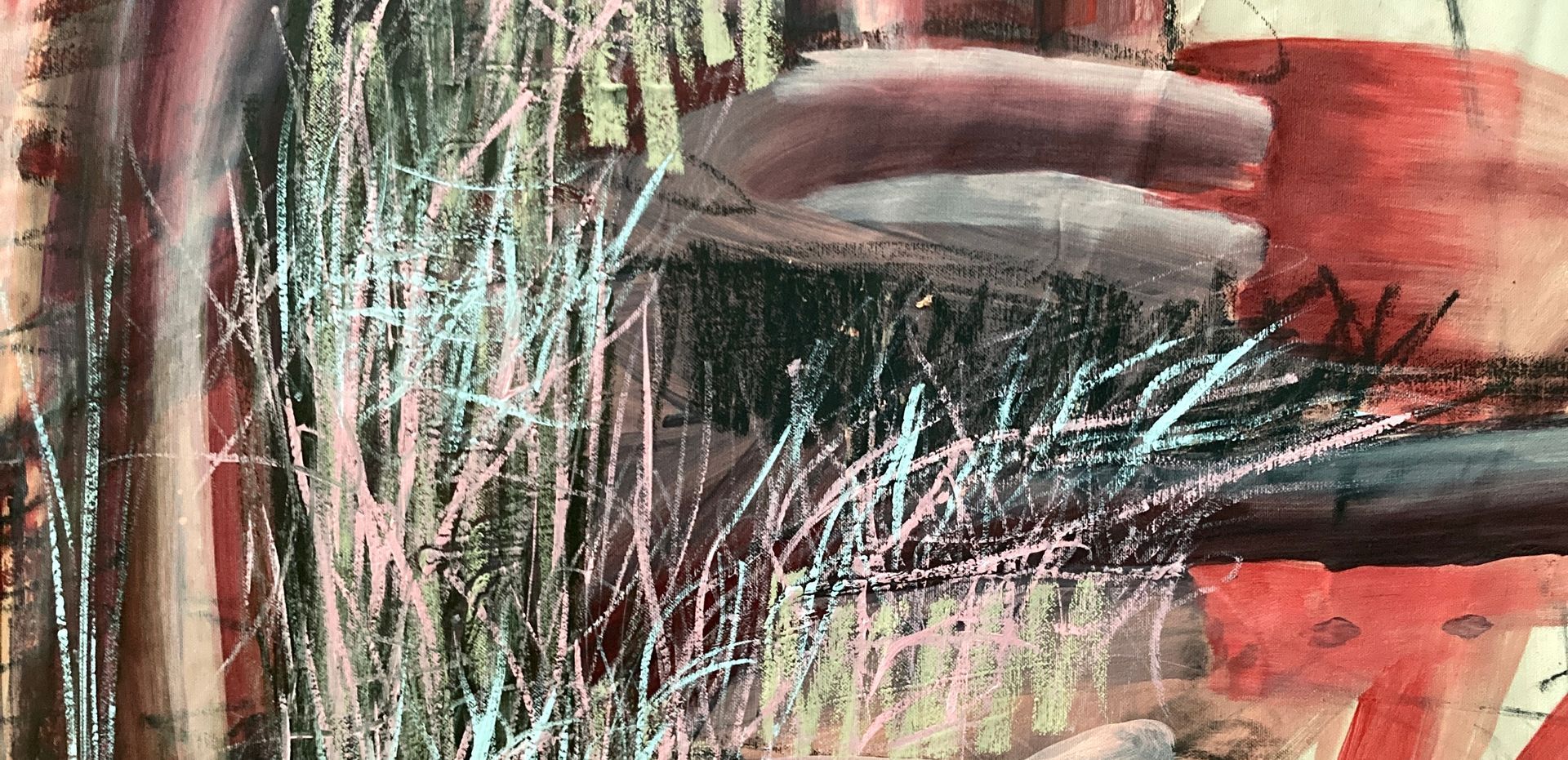
Rethinking Painting: A Shift in My Artistic Process
When I first started this blog, my focus was on painting in the expanded field —exploring how painting intersects with installation, fabrication, and new media. But recently, I had a realization: I needed to refocus on painting itself.
This shift was prompted by my acceptance into the Royal College of Art’s MA Painting program, where I began questioning my relationship with paint. Had my interdisciplinary approach been a way to avoid paint rather than expand upon it?

Embracing Spontaneity: Breaking Free from Over-Planning
I had become a paint-phobic painter—using paint only as a means to execute pre-planned sketches rather than allowing the process to lead me. The most exciting part of my practice wasn’t the painting itself but rather the fabrication—how I could manipulate or deform the canvas, or add installation or new media to it. While this approach wasn’t inherently wrong, I started feeling a lack of spontaneity in my work.
With only one year in the RCA program, I made the decision to confront the physicality of paint. I wanted to explore:
- Mark-making and its emotional impact
- Texture and layering techniques
- Removing vs. applying paint
- New mediums and tools
I started mixing my oil paint with sand, with beeswax. I tested out their texture, transparency, and dry times. Strangely enough, this deep dive into materials led me to an unexpected revelation: I needed to reintroduce drawing into my painting process (recent drawing I did in March 2025 above).
Returning to Drawing: A Forgotten Foundation
Like many artists, I started with drawing—sketching constantly from a young age. But as I transitioned to painting, I was trained to move away from line-based work and focus on light and form instead. Drawing within painting always felt like an artistic taboo.
However, at the RCA, I wanted to let go of over-planning and rediscover expressive freedom. I took a large canvas, placed it on the floor, and let my body movements guide the paint (process in video above). The marks and traces left behind became the foundation of my paintings. I later exaggerated the forms and lines with oil sticks and pastels, and even in some cases, with pigmented cold wax.
What emerged was unexpected—lines reminiscent of doodles, sketches; automatic gestural lines one might do absentmindedly in a notebook. Instead of suppressing them, I decided to amplify and celebrate these types of "hidden" or formerly thought of as "amateur" marks, giving them a new meaning.

Gutai Movement & Egon Schiele: The Power of the Black Line in Painting
Like the artists of the Gutai movement (1954–1972), my practice embraces experimentation, performance, and material exploration, prioritizing freedom, action, and spontaneity. Gutai artists rejected the paintbrush but not the paint, exploring paint's potential through unconventional tools—body parts, machines, and physical gestures. What we see as viewers are the traces of these encounters between paint, tool, and surface. While my process begins with this raw interaction, I later take control, shaping the painting with intention.
Similarly, Egon Schiele fully embraced the expressive power of line, even using flat black (right-out-the-tube black), a color often avoided in painting. Traditional painters consider pure black a faux pas because it can flatten shadows. However, I think black can be an honest, raw element, evoking drawing-like qualities—a direct, unfiltered mark laid bare for the viewer.
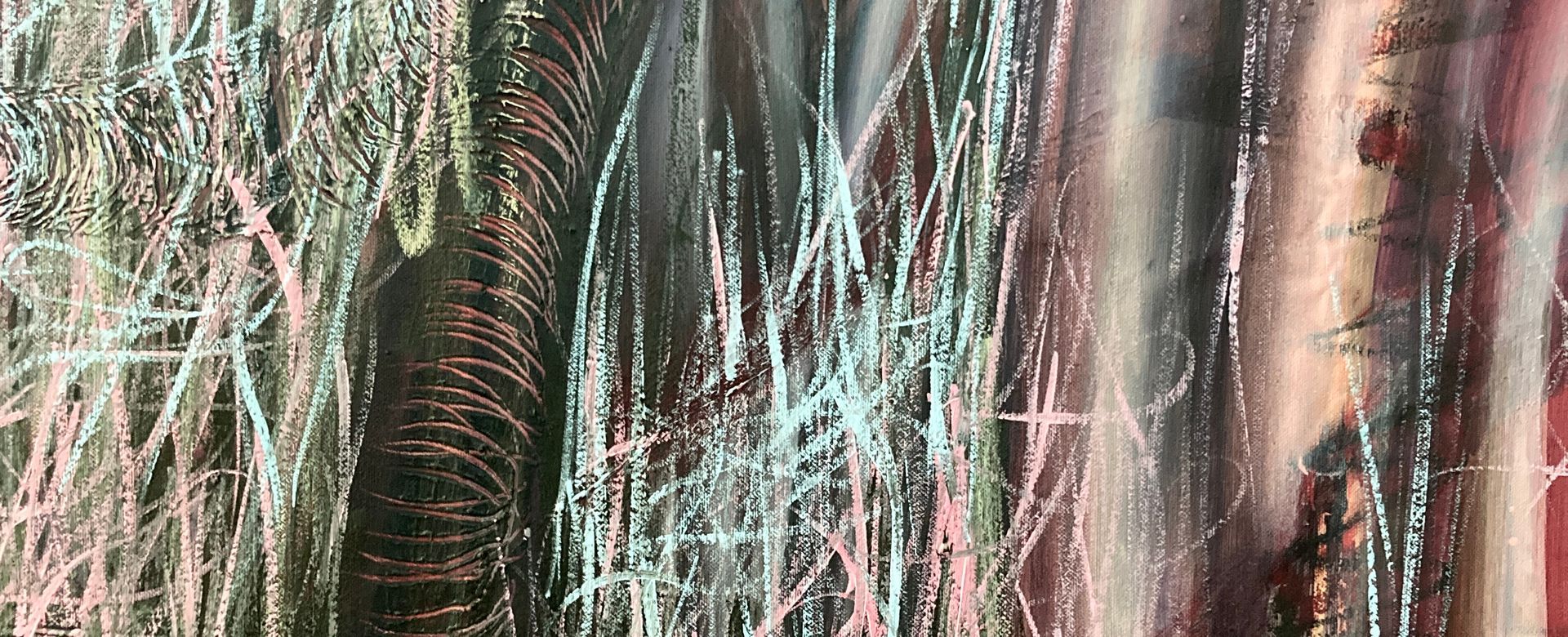
Final Thoughts: Balancing Expansion and Focus in Painting
As an artist, I see expansion and contraction as part of the creative cycle. There are moments to experiment widely and moments to go deep into one medium. Right now, I am embracing the depth of painting—testing its limits and discovering its infinite possibilities.
Below, the painting I'm currently working on, details featured above in blog article.
